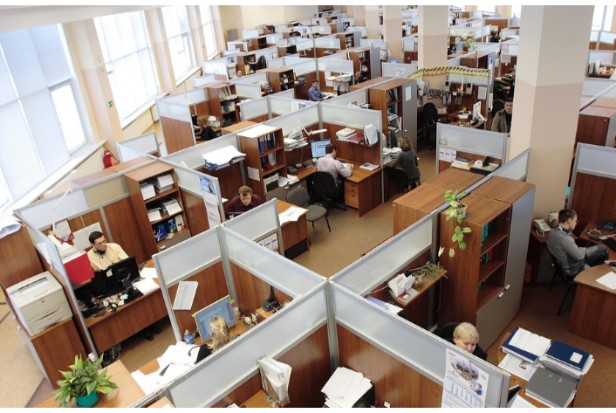
According to data, people have not resumed their pre-Covid commuting habits in any of the largest economies in the world.
According to closely watched commuting data, office workers in the world’s largest economies have adopted hybrid working as the new norm rather than resuming their pre-pandemic commutes. According to a Financial Times analysis of phone-tracking movements released by Google, trips to workplaces in the seven largest economies in the world were still significantly lower by mid-October than they were before the coronavirus started to spread in early 2020. Foot traffic was down 24% in the UK and was down 7% in Japan compared to pre-pandemic levels. Office trips are more common on weekdays in advanced economies generally, with attendance generally declining on Monday and Friday. In comparison to other major population centers, cities with financial and business districts experienced a greater loss of office foot traffic. The shift to remote work, according to economists, has established itself as the new norm. “Working from home will ultimately stick,” said Economist Cevat Giray Aksoy, who has studied the pattern, works for the European Bank for Reconstruction and Development. “Mobility levels at work will continue to be lower than they were before the pandemic.” The big shift to working from home “presents challenges for dense urban centres that are organised to support a large volume of inward commuters and a high concentration of commercial activity”, said Aksoy.
According to Aksoy’s research, a growing number of job postings worldwide give applicants the option of working remotely one or more days per week. The founder and CEO of FlexJobs, a career service that specializes in remote and hybrid jobs, Sara Sutton, concurred. “We have definitely seen a tipping point towards a deeper and more permanent integration of remote and hybrid work into organisations,” she said. People seem to enjoy working from home, according to survey data, and the practice lowers overhead costs and carbon emissions for businesses, but the evidence on how working from home affects productivity is conflicting. Occupancy for both workspace stations and meeting rooms is about half of what it was in 2019, according to the Freespace index, which tracks office usage in major corporations around the world. Occupancy didn’t fully recover to pre-pandemic levels until mid-October, according to Kastle data, which monitors fob access to US offices, particularly in large professional services firms.
According to a survey conducted by the Munich-based think tank Ifo, 25% of German workers continued to work remotely at least occasionally in August. A routine survey conducted by the Office for National Statistics in the UK revealed that in early October, more than a fifth of UK workers continued to use a hybrid model of working that had largely not changed since the spring. Information and communication activities saw an increase in percentage to over 50% of the workforce, with professional, scientific, and technical activities only slightly below.
Read More about Office Supplies:
- 8 Best Office Coffee Makers in 2022
- 7 Best Office Chairs for Back Pain In 2022
- 22 Best Plants for Office With No Windows In 2022
- 10 Best Office Chairs for Short People in 2022 – Comfortable Chairs
- 6 Best Office Chairs for Tall People – How to Choose The Right Chair
- Top 9 Most Expensive Office Chairs In The World
- 5 Best Office Chairs for Sciatica to Reduce Pain – Perfect Choice
- 13 Best Mesh Office Chairs in 2022: A Guide For Buyers
- 15 Best Executive Leather Office Chairs In 2022: buyer’s Guide
- 13 Best Office Chairs Under $200 In 2022
